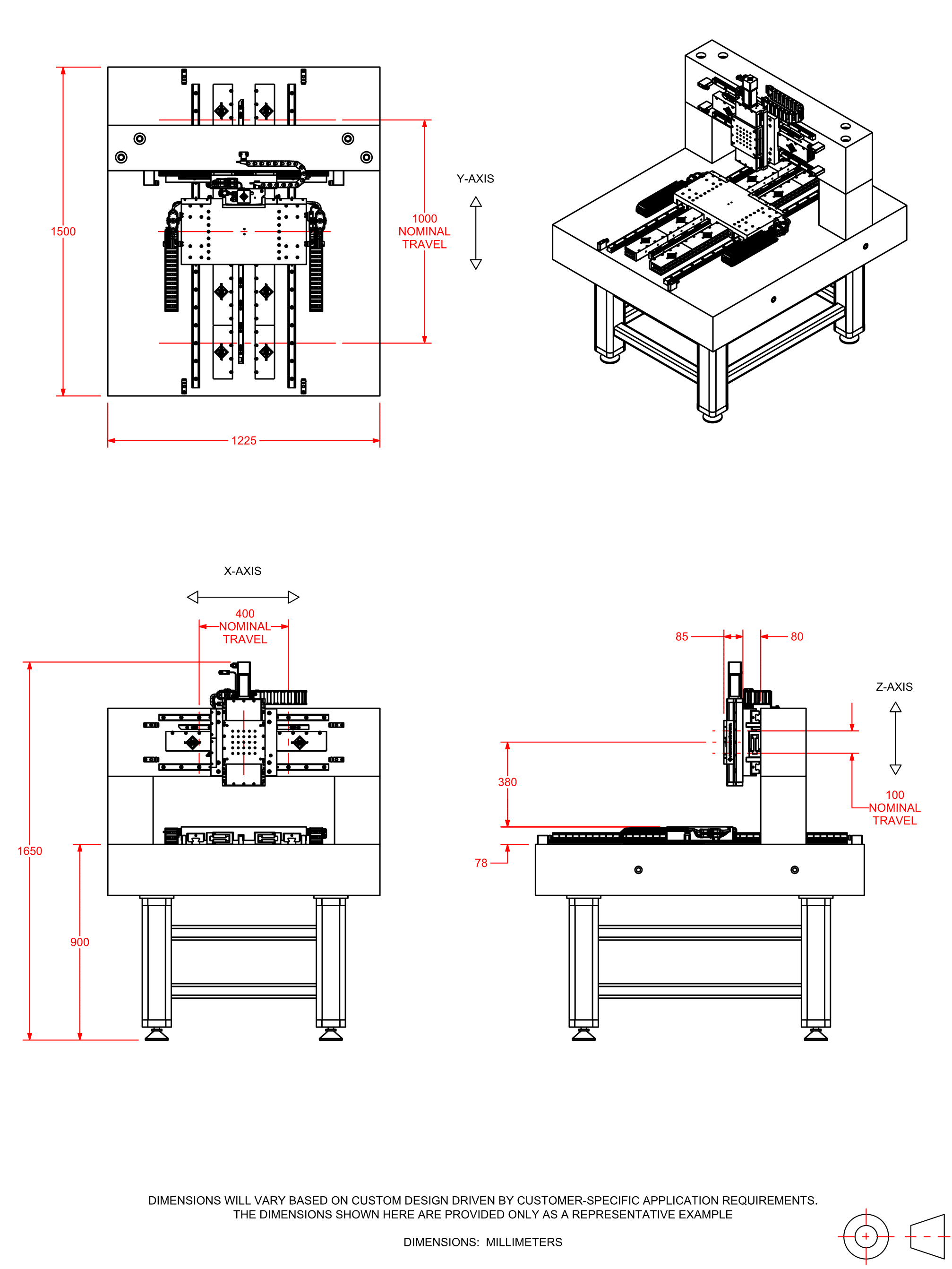Mechanical-Bearing IGM System
Mechanical-bearing Integrated Granite and Motion (IGM) systems represent the pinnacle of design flexibility since each system is designed for a specific application requirement. This particular multi-axis system utilizes IGM design concepts with bearings, encoders and linear motors mounted directly to granite, resulting in a simpler solution with less overall workpoint-to-granite height than a traditional stage-on-granite system.
Description
Specifications
Dimensions
Downloads
Description
Description
Specifications
Dimensions
Downloads
Description
Design Features
- Custom-engineered multi-axis motion platform integrates linear motion components directly into a granite structure
- Recirculating-element bearings offer robust motion performance and ample stiffness
- Linear-motor and ball-screw drive options are available
- Wide-body base axis easily accommodates larger payloads
- Design is scalable based on application requirements for travel length, payload and dynamic performance
Mechanical-bearing Integrated Granite Motion (IGM) systems are ideal for medium- to high-performance applications. This particular multi-axis system utilizes IGM design concepts with bearings, encoders and linear motors mounted directly to granite, resulting in a simpler solution with less overall workpoint-to-granite height than a traditional stage-on-granite system.
Because they are specifically engineered to meet a customer’s application requirements, IGM motion systems represent the pinnacle of design flexibility. From drive and bearing type selection to system layout and arrangement, IGM systems are available with a wide variety of value-adding accessories and state-of-the-art control electronics. Aerotech’s motion engineers regularly custom-tailor IGM systems to meet unique technical and commercial application requirements.
The integrated nature of an IGM system lends itself to offer certain unique technical benefits. The granite structure is able to offer increased stiffness over traditional stages in certain situations, contributing to improved dynamic performance. Further, the simplified structural design serves to reduce the axis profile and minimize design offsets, resulting in a reduction in Abbe errors and therefore more accurate motion at the desired workpoint.
See our case study for a comparison of an IGM system versus a traditional stage-on-granite system.


